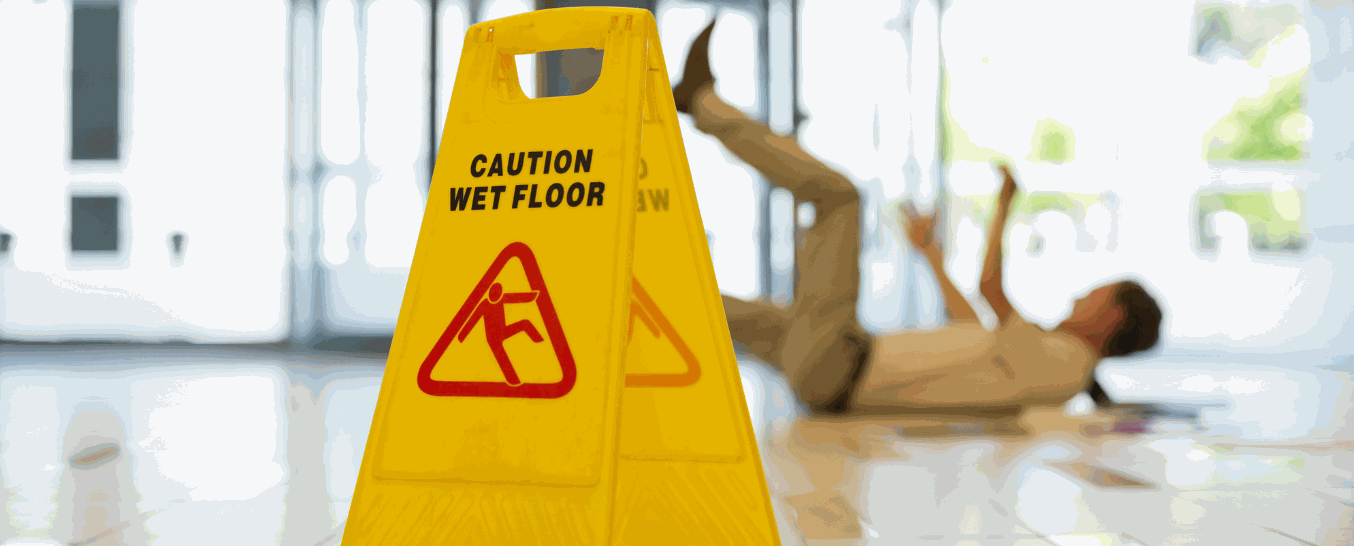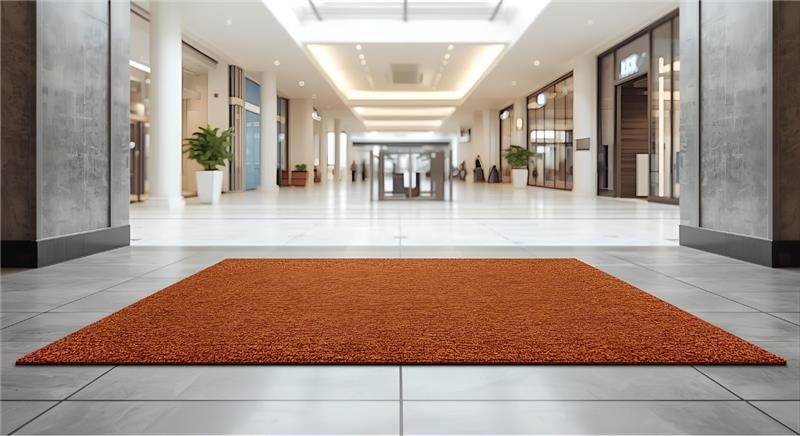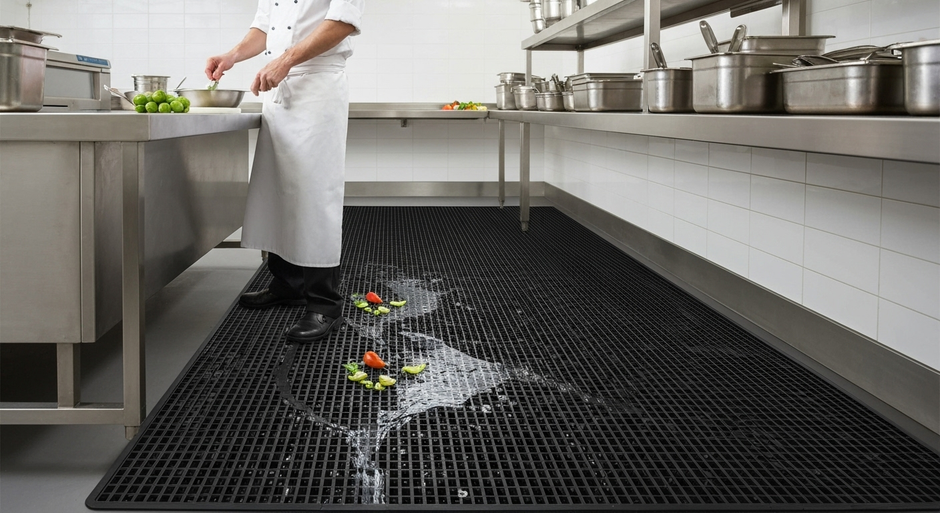7 Ways to Stop Slips on Ice
In this blog we will be looking at 7 Ways to Stop Slips on Ice. Slips and falls are extremely costly to society. Not only to the individuals involved, who suffer injury and incalculable emotional cost, but to businesses as well. Businesses face fines and claims of compensation as well as missed hours if it’s a member of their workforce who is injured. When temperatures dip and ice forms on paths and walkways, slip and fall accidents increase exponentially. Many of these accidents can be avoided with some simple measures put in place. Here we look at 7 ways to stop slips on ice.
1. Use grit on walkways
What we know as grit is more commonly rock salt. Spreading salt is a very effective method to stop slips on ice, because it works by lowering the temperature that ice forms on the surface. Put grit down in advance of cold weather to stop ice forming, or use it on snow and ice that has already formed to quickly melt it away.
2. Use deicer on ice that has formed
When ice has already formed then deicer is a more efficient solution than using grit / rock salt. Deicer is a chemical that generates heat to quickly melt ice away. The drawback is that it is not very good at preventing further ice from forming, so it will need to be reapplied regularly if low temperatures or snow fall persists.
3. Use matting
A quick and easy solution to stop slips on ice is to use non-slip matting at the external entrances to buildings and along paths and walkways. The mats need to have drainage holes to allow water to fall through the mat which will help prevent snow and ice forming on the mat surface. Rubber mats are best to use externally as they can resist low temperatures.

4. Cover external entrances and walkways
If your walkways and entrances are covered, with a canopy or porch for example, rain water and snow will not be able to fall on the ground and so this will eliminate the chance of ice forming in the first place.
5. Wear appropriate footwear

When walking on icy days it is important that individuals choose the right footwear for themselves. Businesses can also educate their employees in the importance of good footwear for safety. Rubber soles with treads will provide better traction. In severe conditions specialist cleats and overshoes may be worn to give that required grip.
6. Use warning signage
On an icy day, warning people of the danger should make them act more cautiously and hopefully watch where they are going. High visibility signage is useful for this purpose, but make sure that the sign is placed appropriately so as not to be a trip hazard in its own right!
7. Walk the right way
When walking the best way to avoid slips on ice is to slow down, take smaller steps and aim to have the whole of your shoe sole land on the floor at once, not just your heel. The increase in surface area contact between your shoe and the floor reduces the likelihood of you slipping.
The Importance of Avoiding Slips on Ice: Stop Slips
Winter brings its own set of challenges, and one of the most significant is the risk of slipping on ice. Slips and falls on icy surfaces can lead to serious injuries, making it crucial to take preventive measures. In this blog, we’ll explore why it’s important to avoid slips on ice and how you can effectively stop slips to ensure safety during the colder months.
Preventing Injuries
Slipping on ice can result in a range of injuries, from minor bruises to severe fractures and head injuries. These accidents can have long-term consequences, affecting your mobility and overall quality of life. By taking steps to stop slips, you can significantly reduce the risk of injuries and ensure that you and your loved ones stay safe.
Reducing Healthcare Costs
Injuries from slips and falls can lead to expensive medical bills, including emergency room visits, surgeries, and physical therapy. Preventing slips on ice not only protects your health but also helps you avoid these costly medical expenses. Investing in preventive measures is a cost-effective way to safeguard your wellbeing and finances.
Maintaining Productivity
For businesses, slips and falls on ice can result in lost productivity. Employees who suffer injuries may need time off work to recover, leading to disruptions in operations. By implementing measures to stop slips, businesses can maintain a safe working environment, reduce absenteeism, and ensure that operations run smoothly even during winter.
Enhancing Public Safety
Public spaces such as sidewalks, parking lots, and entryways are particularly prone to icy conditions. Ensuring these areas are safe is essential for protecting the public. Municipalities and property owners have a responsibility to take preventive measures to stop slips and create a safe environment for everyone. This not only prevents injuries but also fosters a sense of community wellbeing.
Legal and Liability Concerns
Property owners and businesses can be held liable for injuries that occur on their premises due to icy conditions. Failing to take adequate measures to prevent slips can result in legal action and financial penalties. By proactively addressing icy surfaces and implementing strategies to stop slips, property owners can mitigate liability risks and demonstrate their commitment to safety.
Promoting Confidence and Peace of Mind
Knowing that measures are in place to prevent slips on ice can provide peace of mind for individuals and businesses alike. Employees, customers, and the general public will feel more confident navigating icy areas when they know that safety precautions have been taken. This confidence can lead to a more positive experience and a greater sense of security.
How to Stop Slips on Ice
To effectively stop slips on ice, consider the following strategies:
-
Use Ice Melt Products: Apply ice melt products to walkways, driveways, and other high-traffic areas to prevent ice from forming. Choose products that are effective at low temperatures and safe for the environment.
-
Install Anti-Slip Mats: Place anti-slip mats at entryways and other areas prone to ice accumulation. These mats provide traction and help prevent slips.
-
Clear Snow Regularly: Regularly shovel and clear snow from walkways and driveways to prevent it from compacting into ice. Use a snow blower or hire a professional service if necessary.
-
Wear Appropriate Footwear: Encourage the use of footwear with good traction, such as boots with non-slip soles. This can significantly reduce the risk of slipping on ice.
-
Install Handrails: Install handrails along stairs and walkways to provide support and stability for individuals navigating icy areas.
-
Educate and Inform: Raise awareness about the risks of slipping on ice and the importance of taking preventive measures. Provide information and resources to help individuals stay safe.
Conclusion
Avoiding slips on ice is crucial for preventing injuries, reducing healthcare costs, maintaining productivity, enhancing public safety, and mitigating legal risks. By taking proactive measures to stop slips, you can create a safer environment for yourself, your employees, and the public. Invest in the right tools and strategies to ensure safety during the winter months and enjoy peace of mind knowing that you have taken steps to protect against the dangers of icy conditions.
At Mats4U we have several matting solutions that are designed to help stop slips on ice. You can view our range of non-slip mats on our website or contact us on 0121 313 6748 for more advice.
To stay up to date with new products and information please follow us on Linkedin









